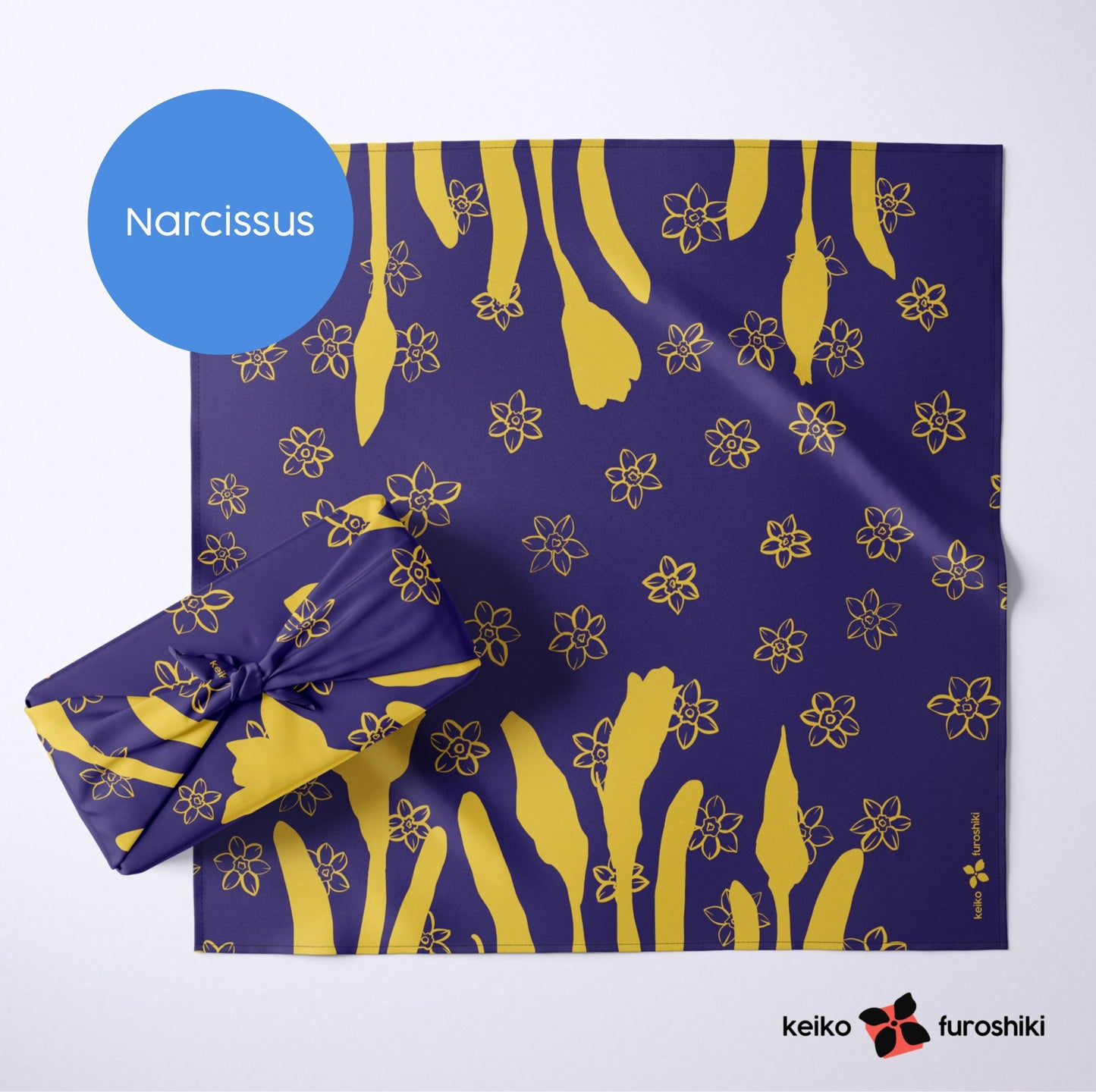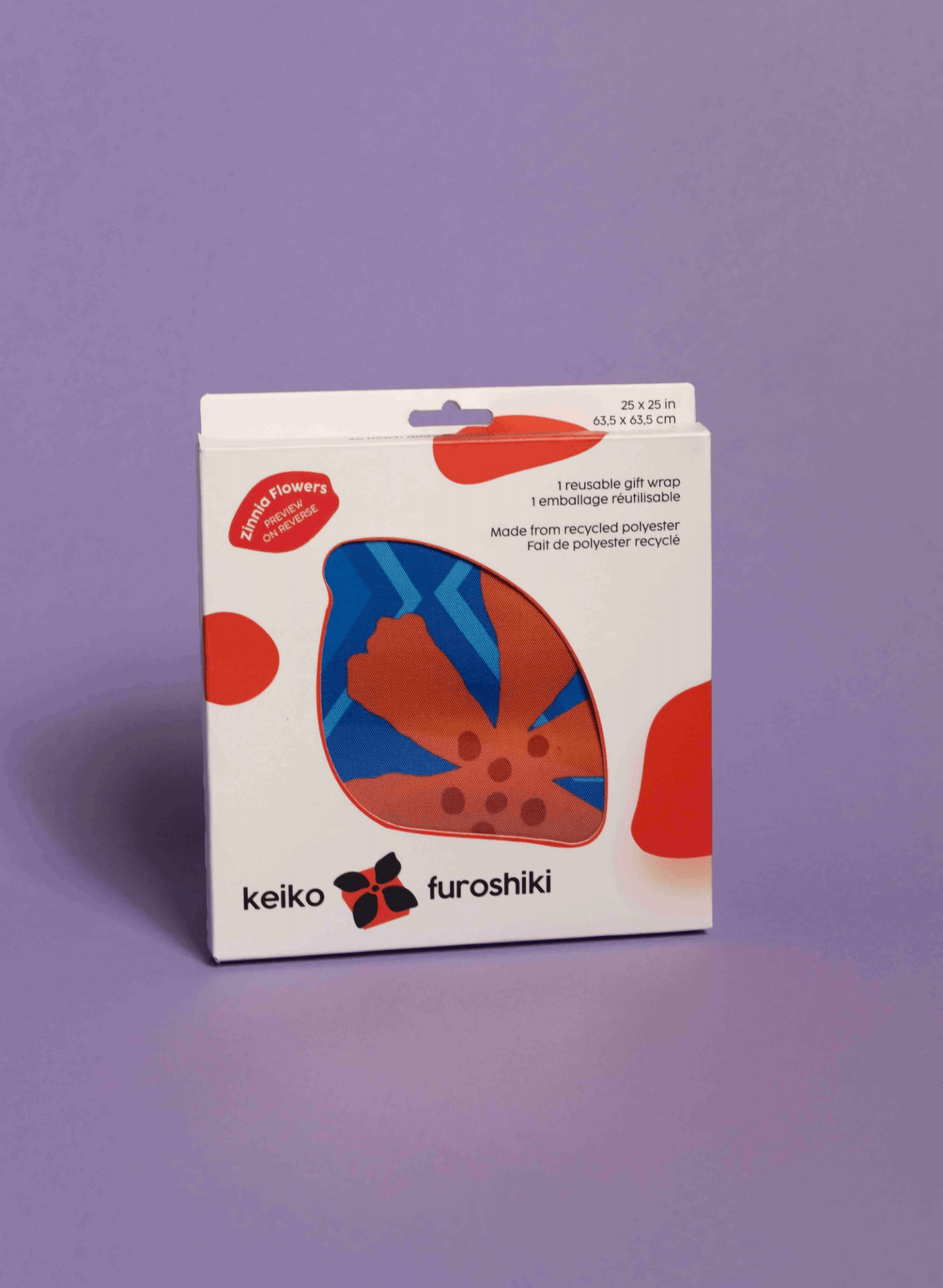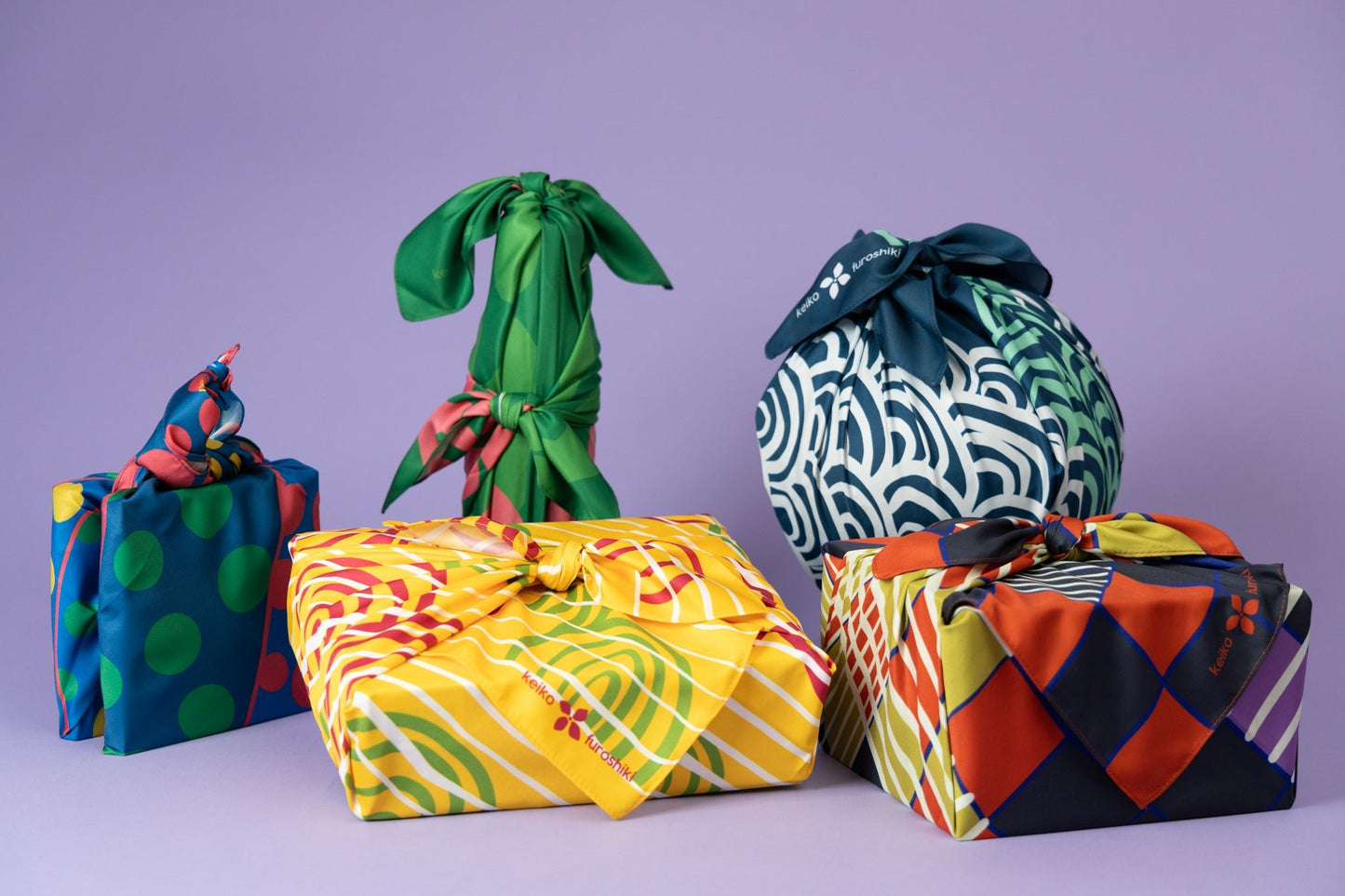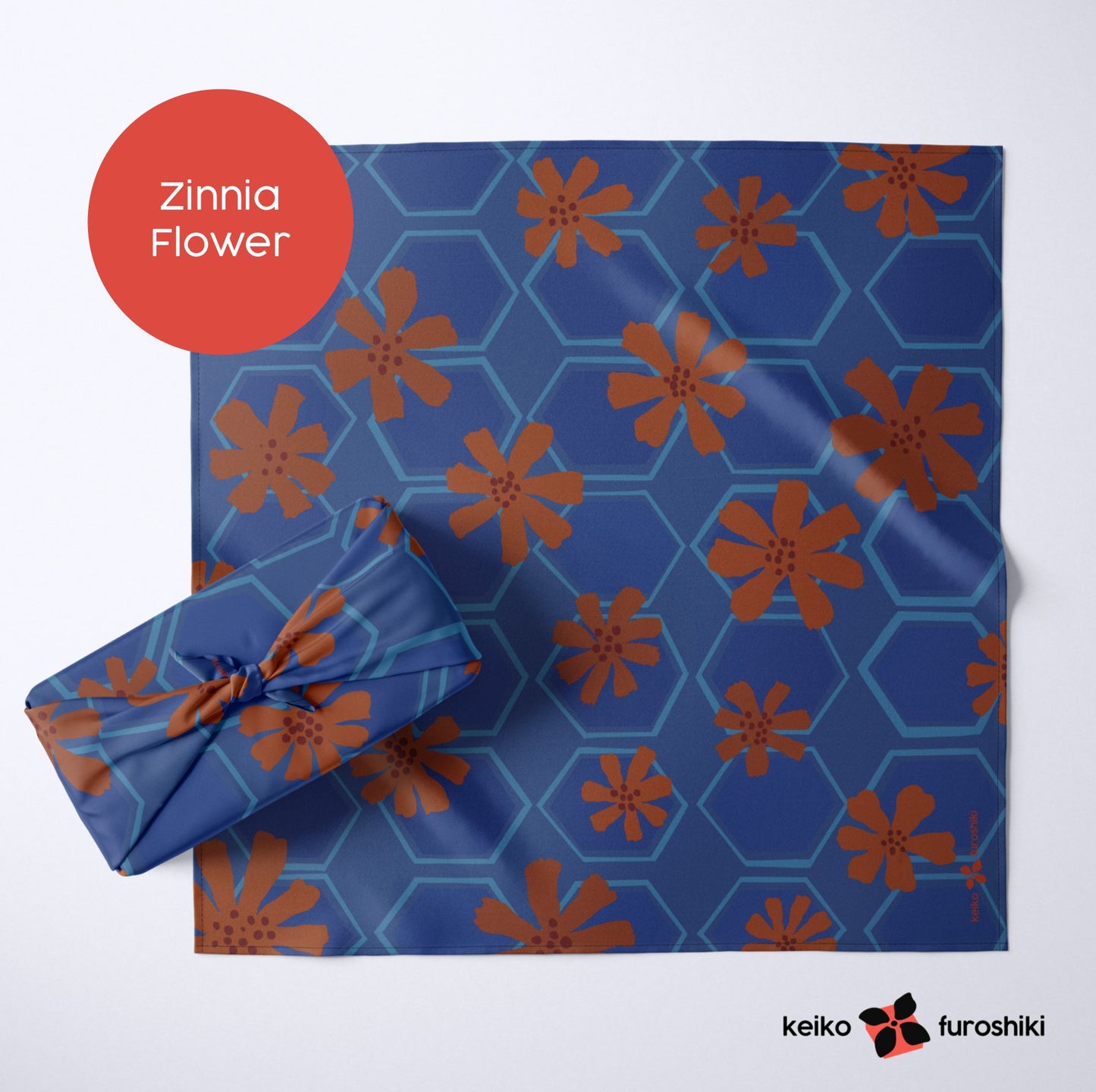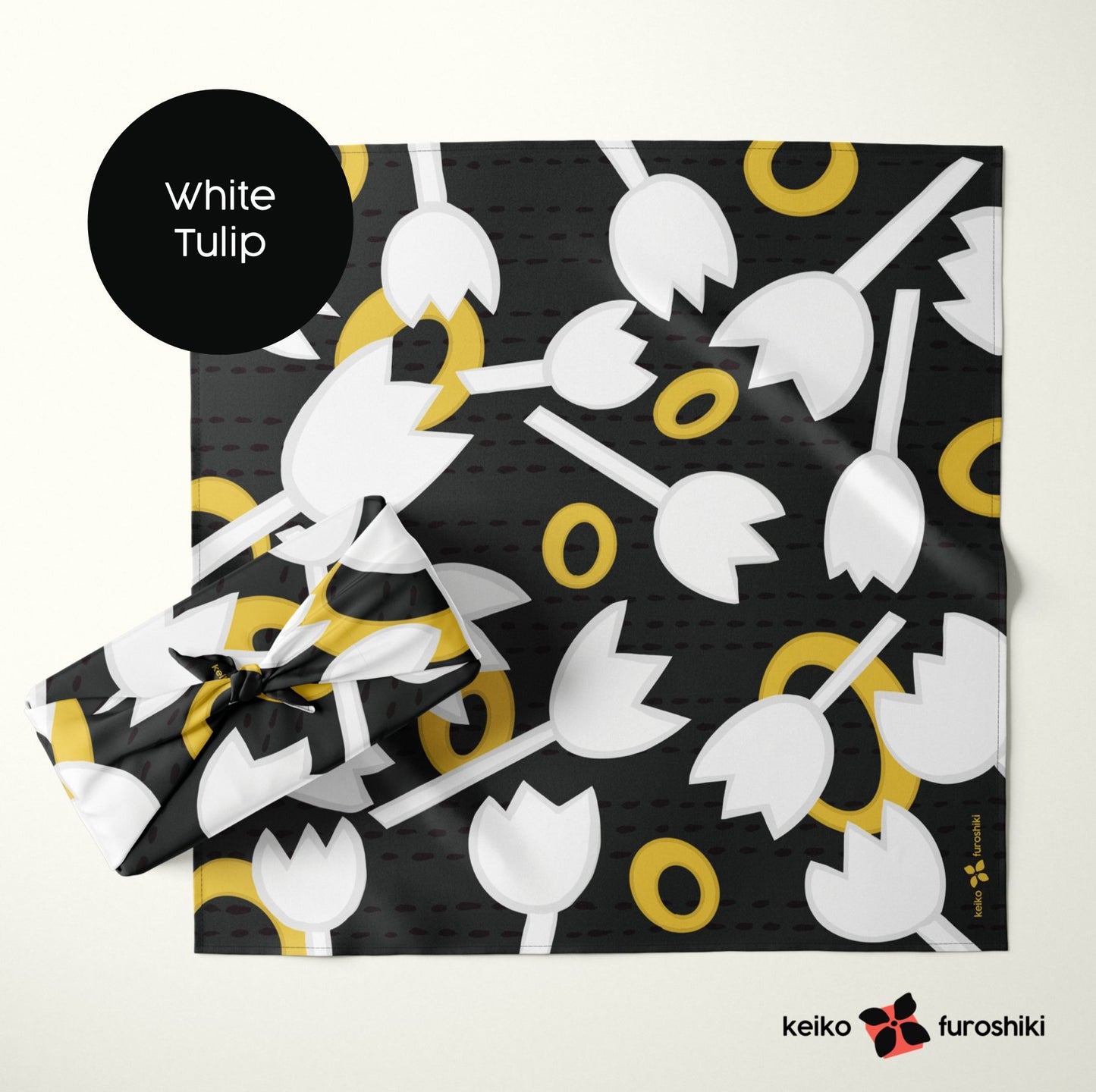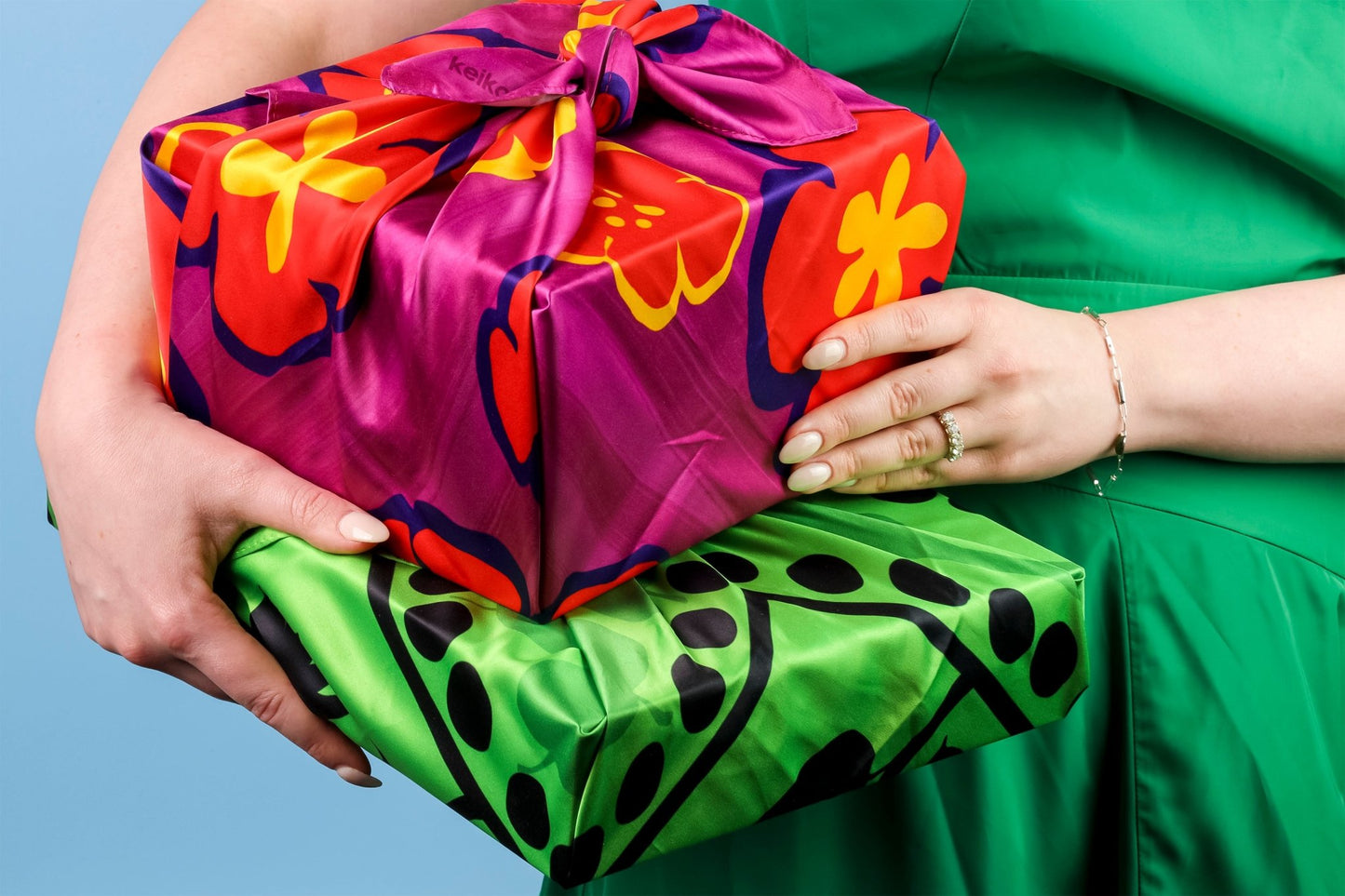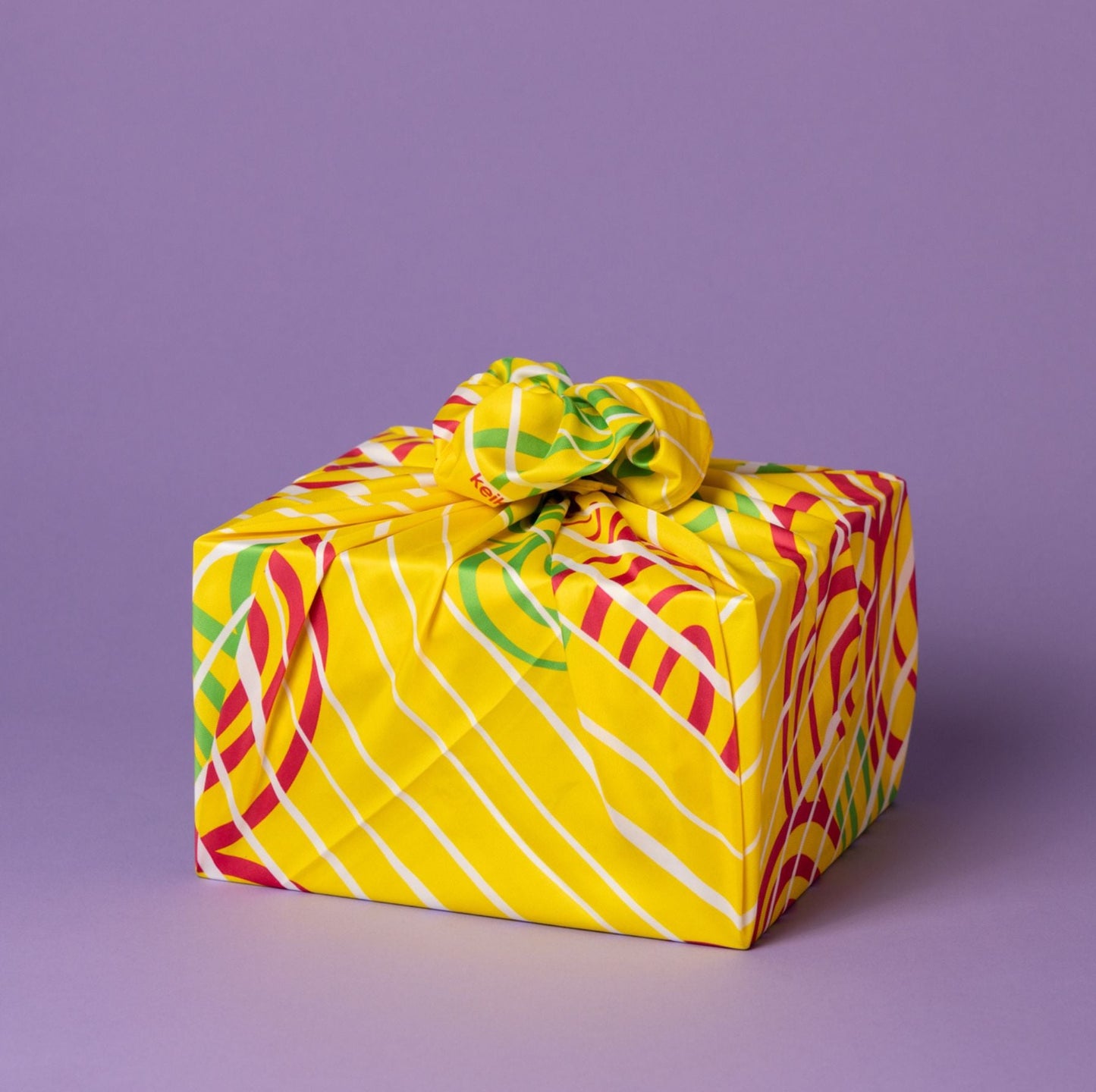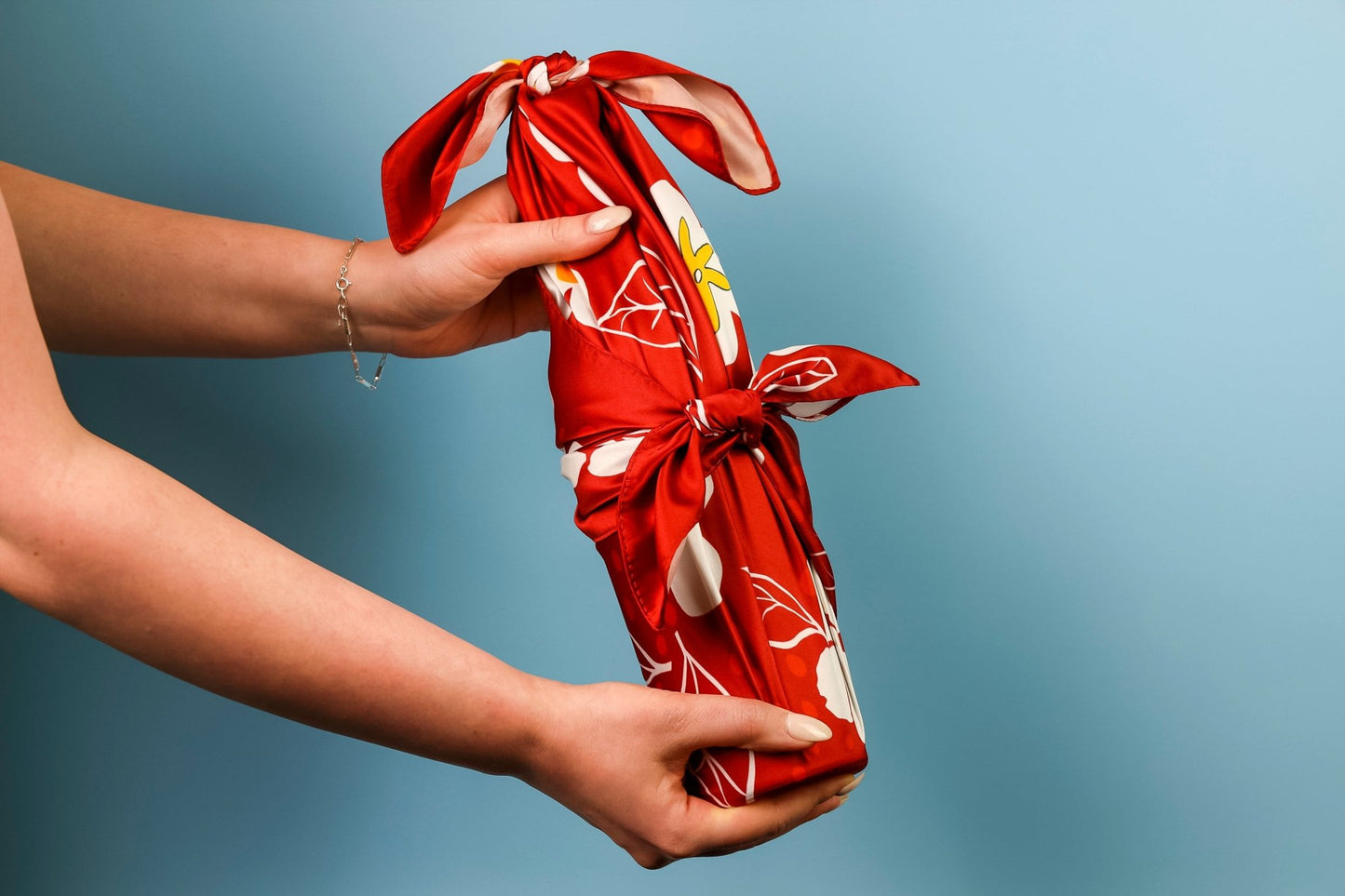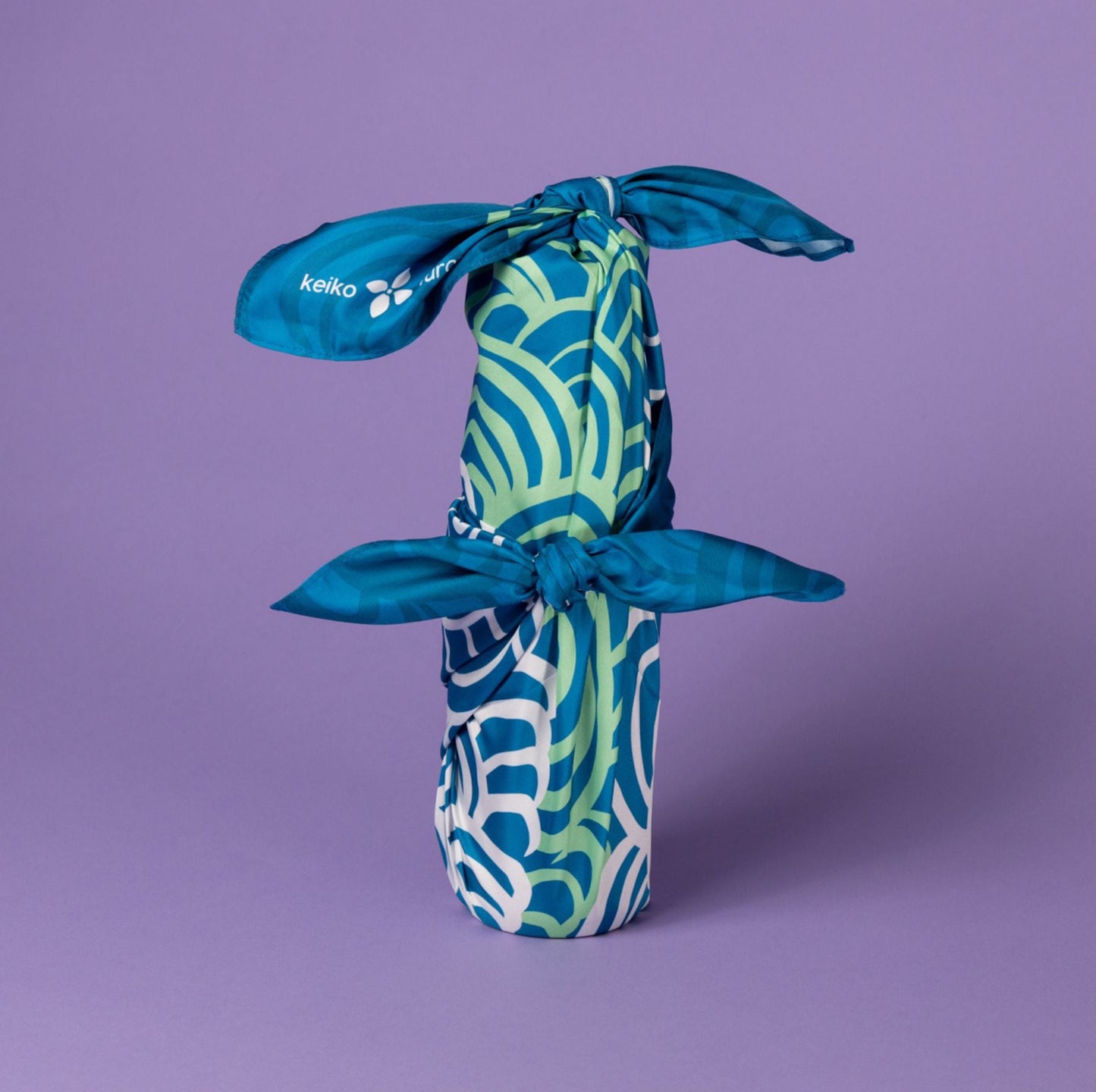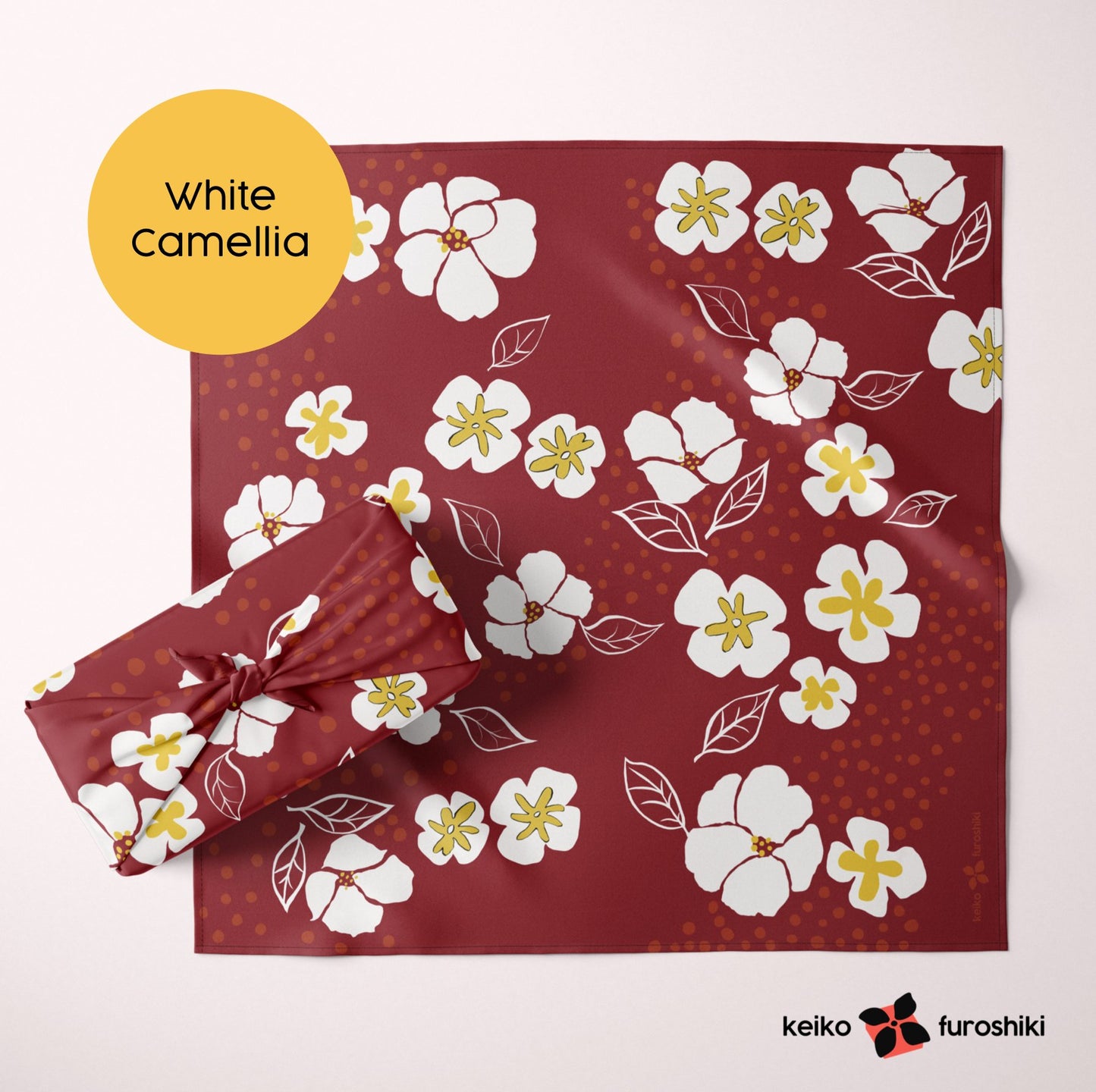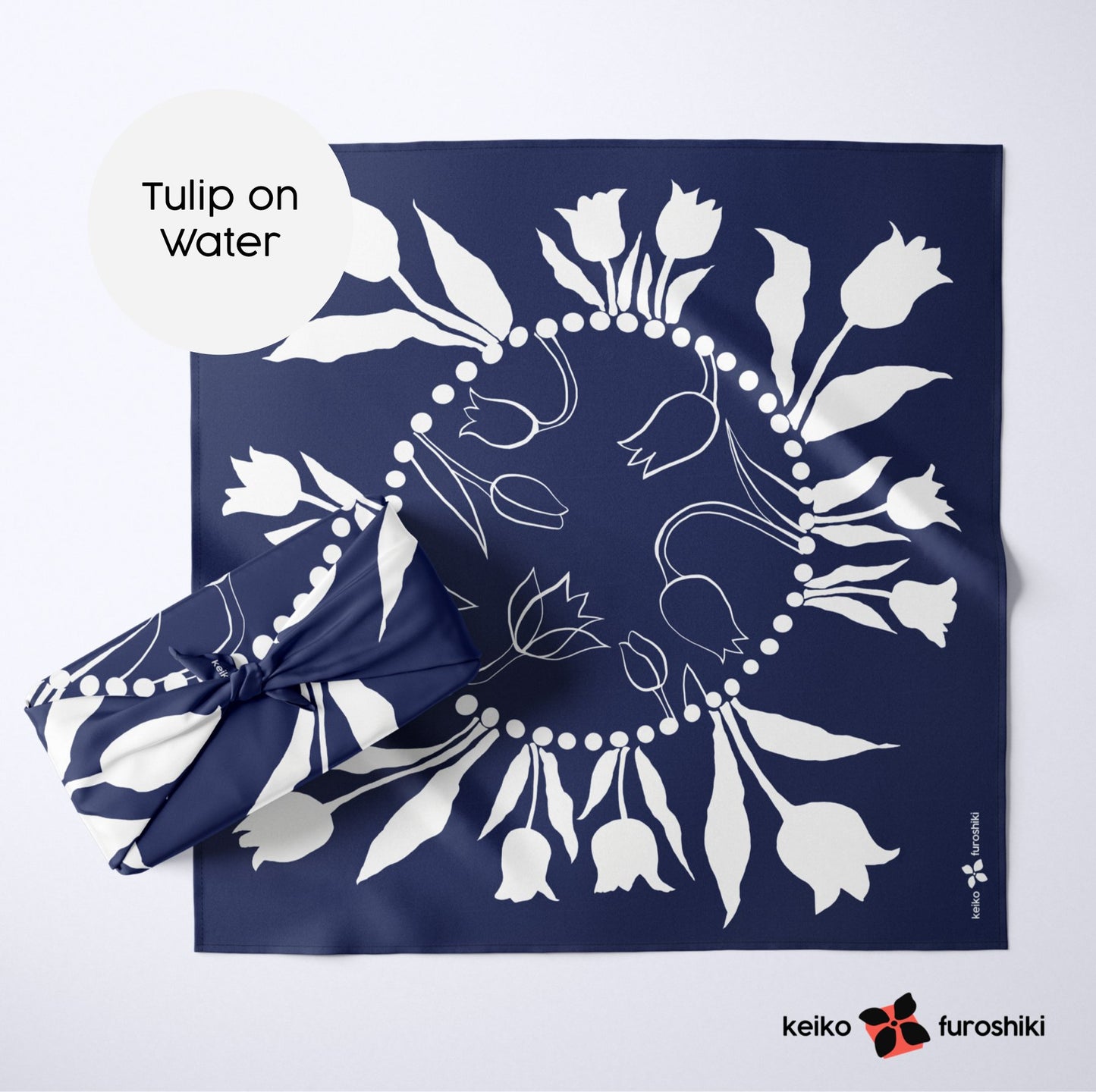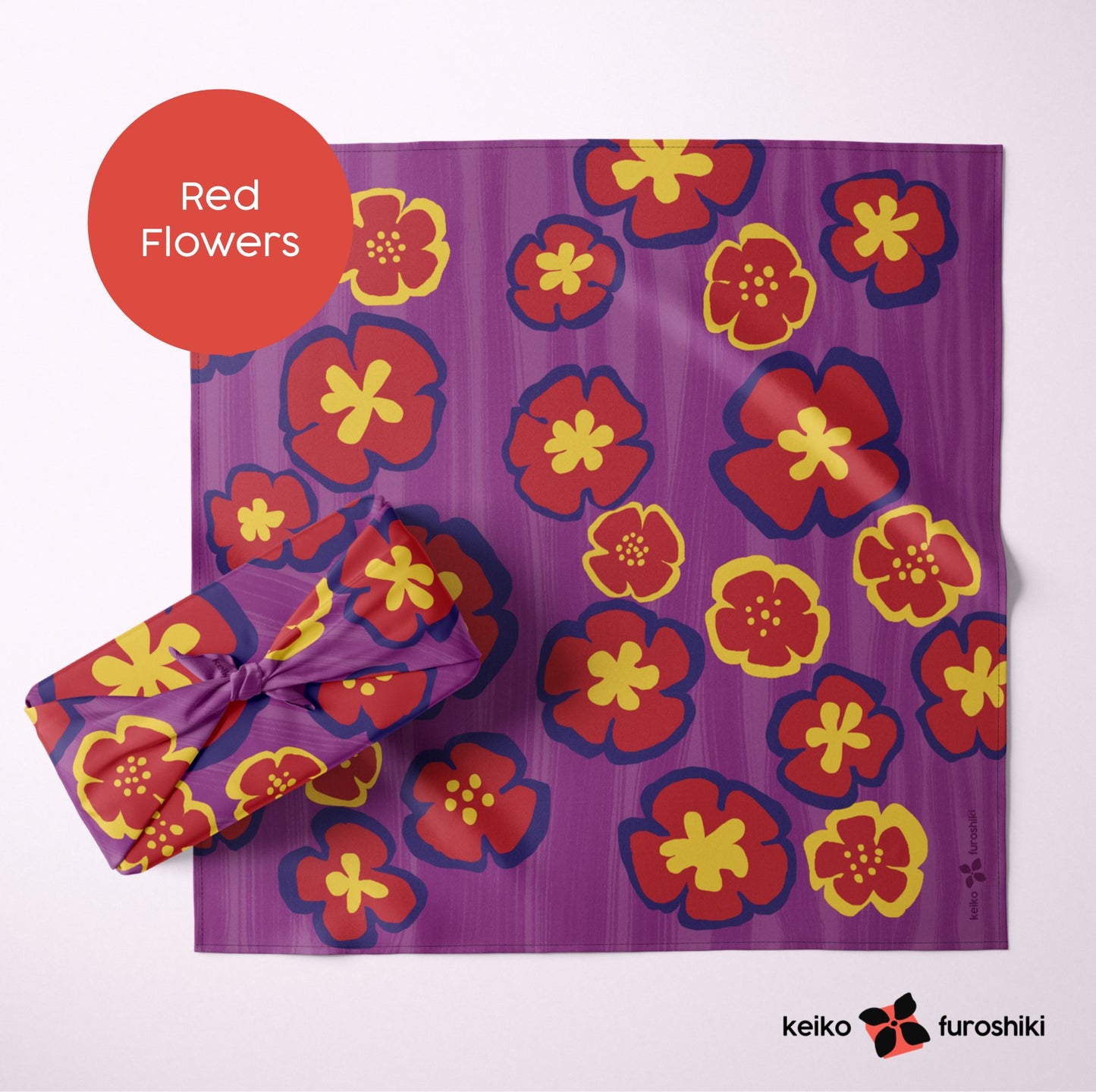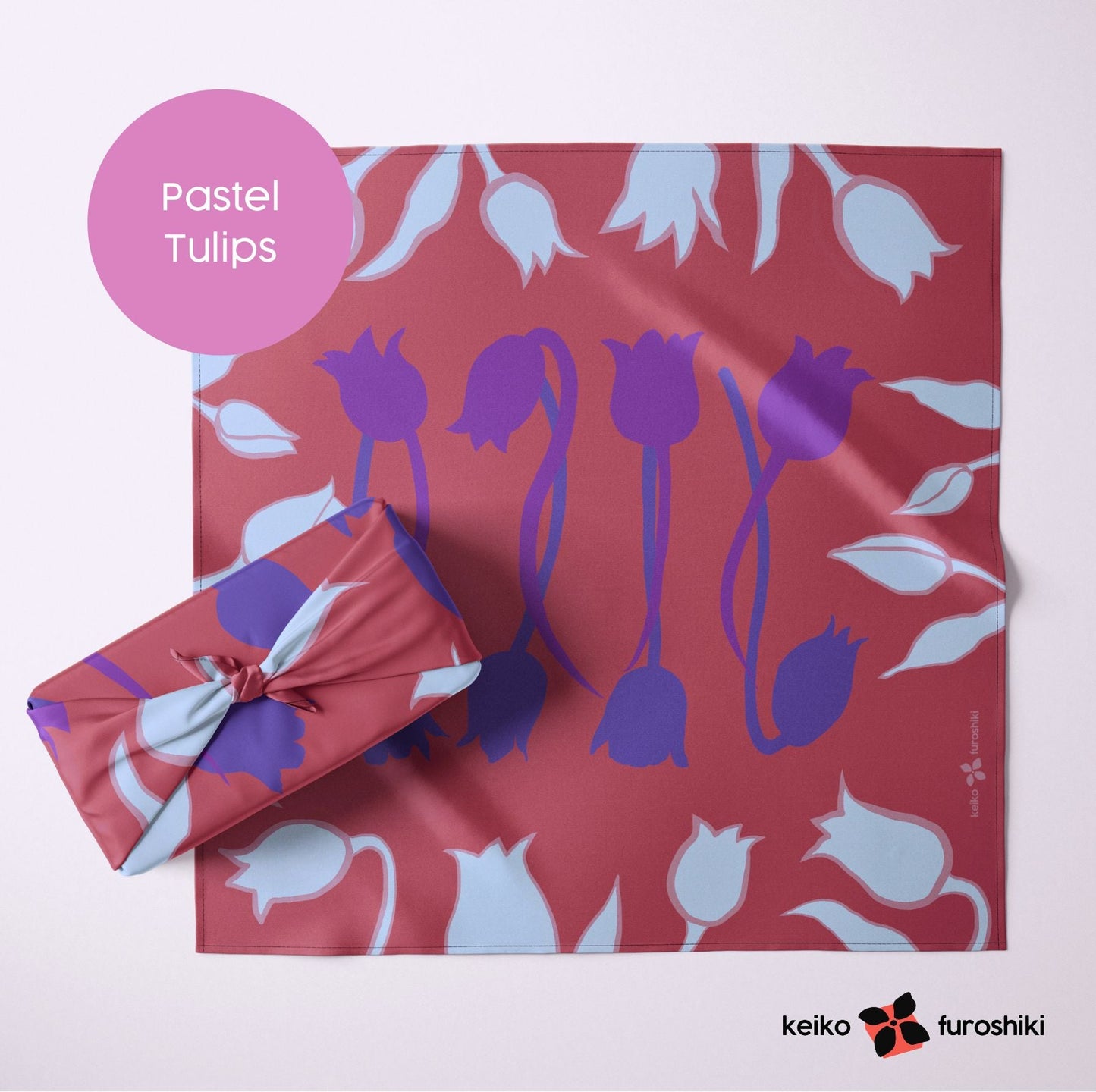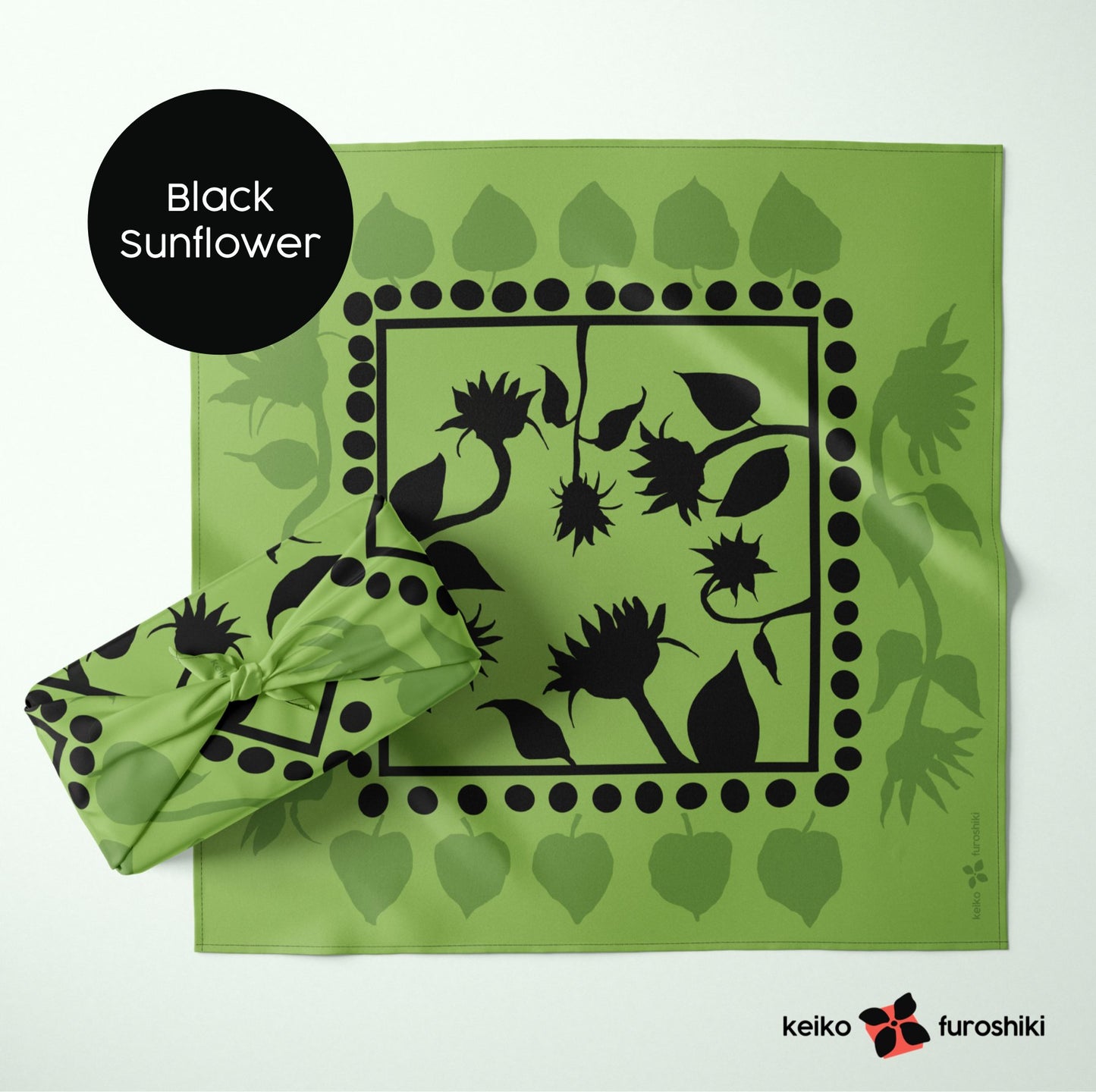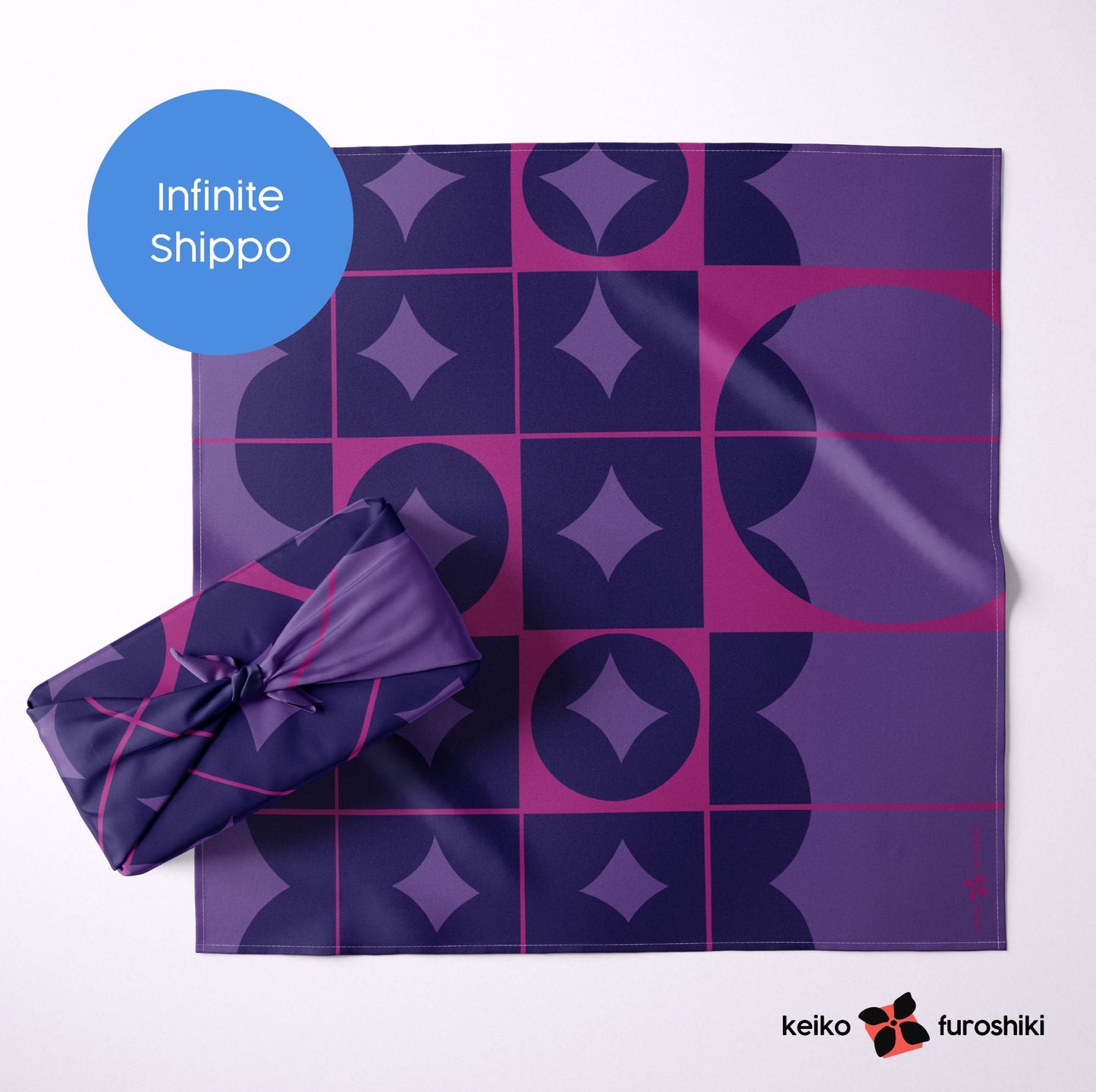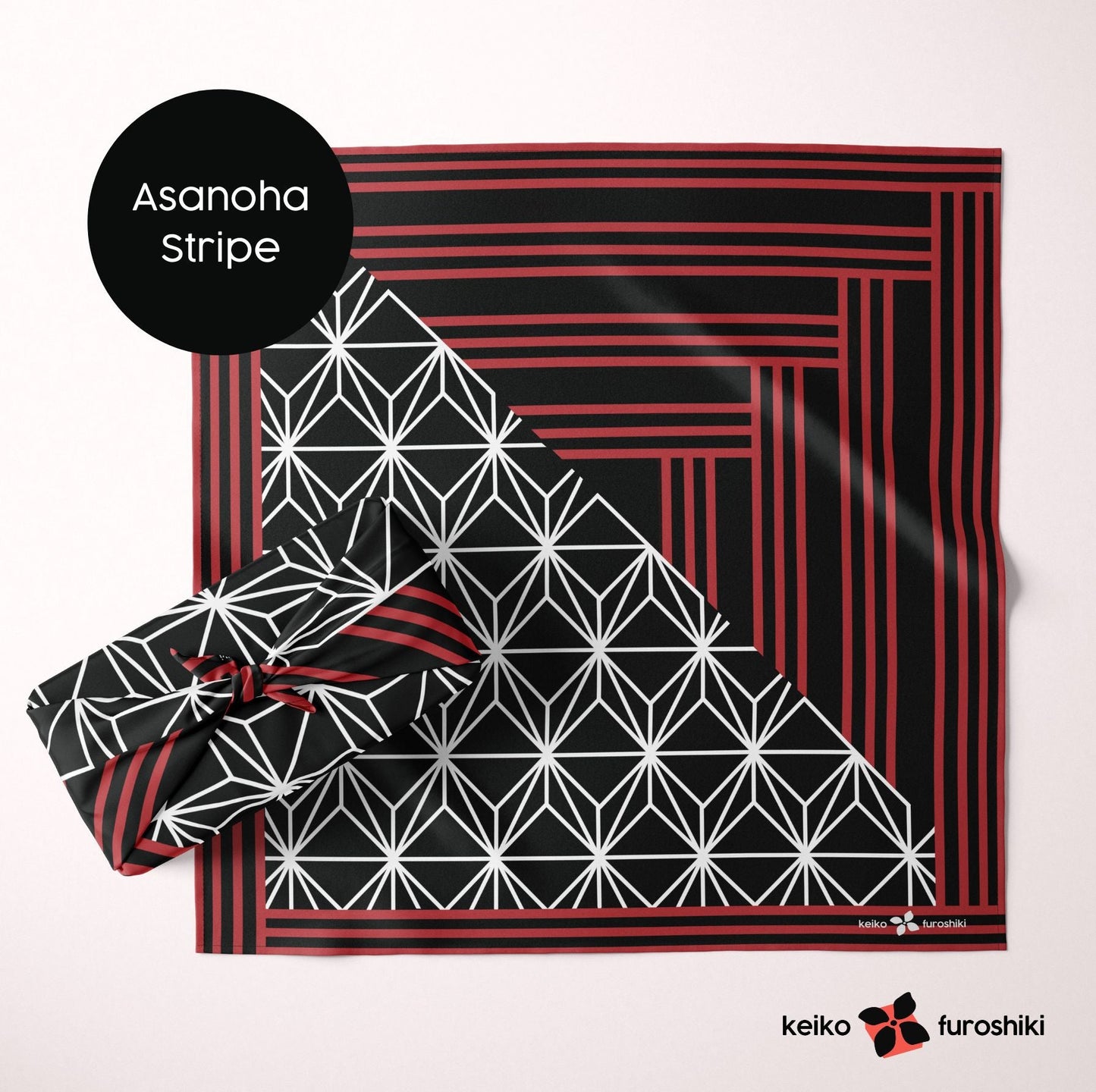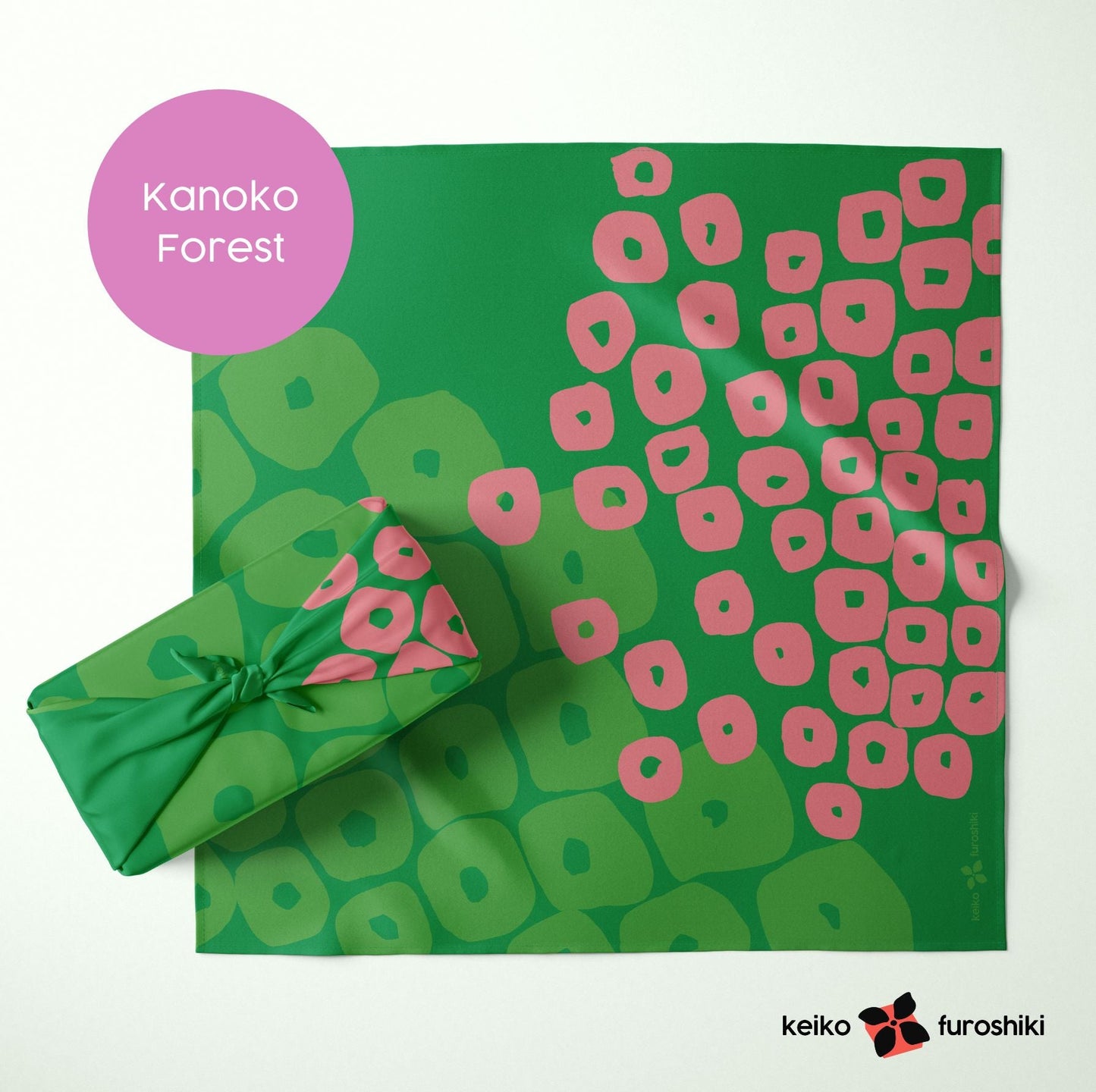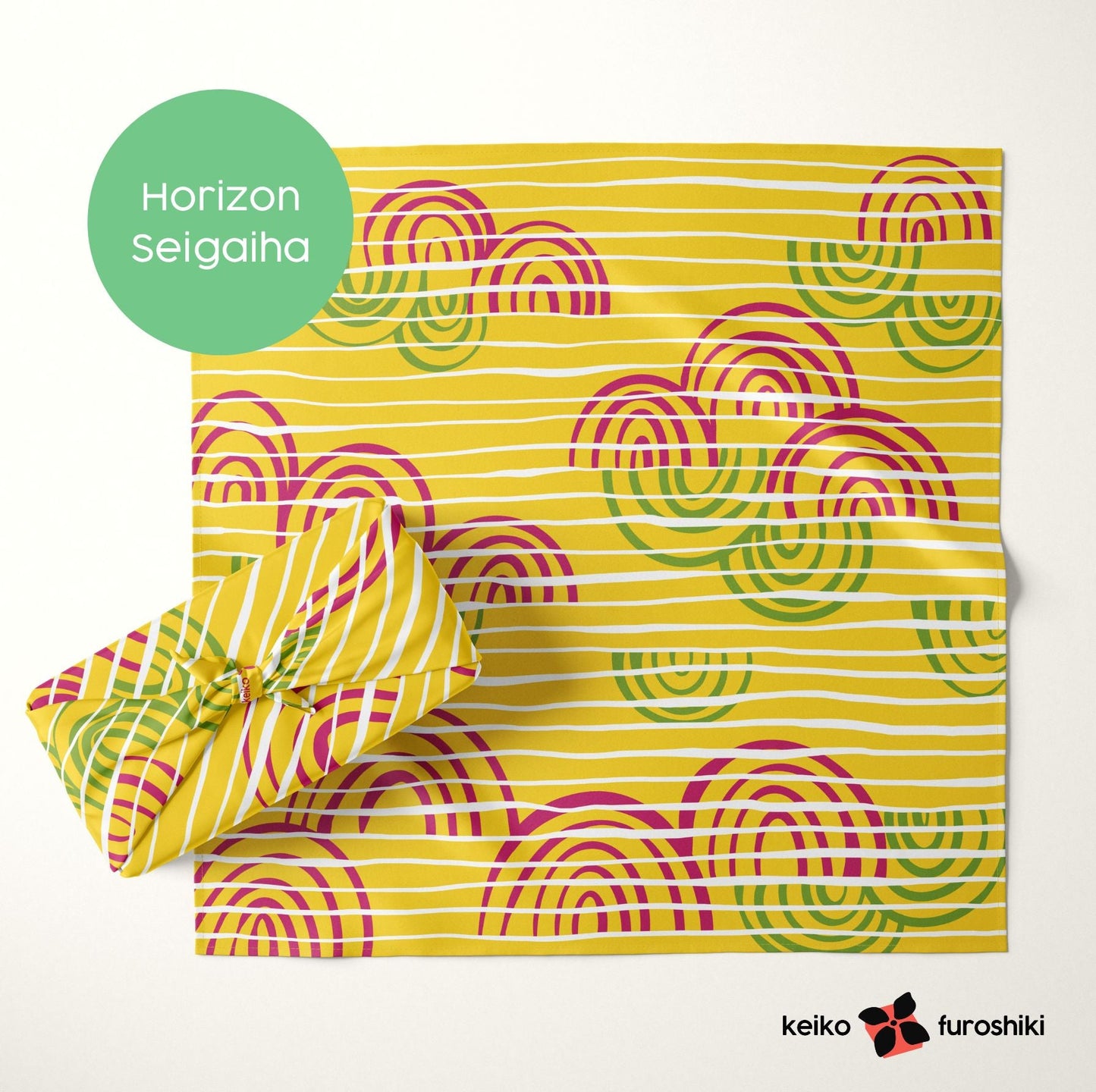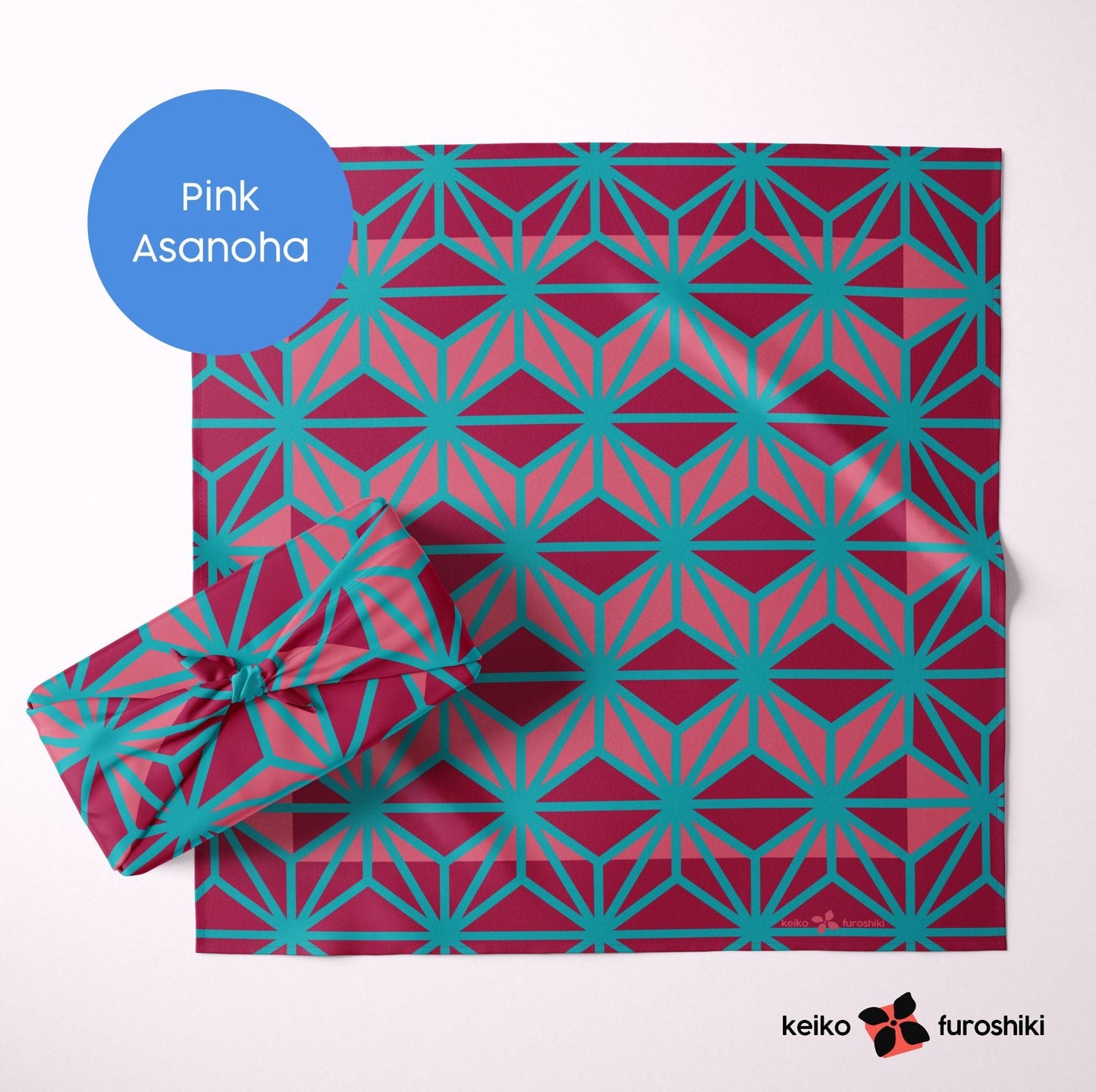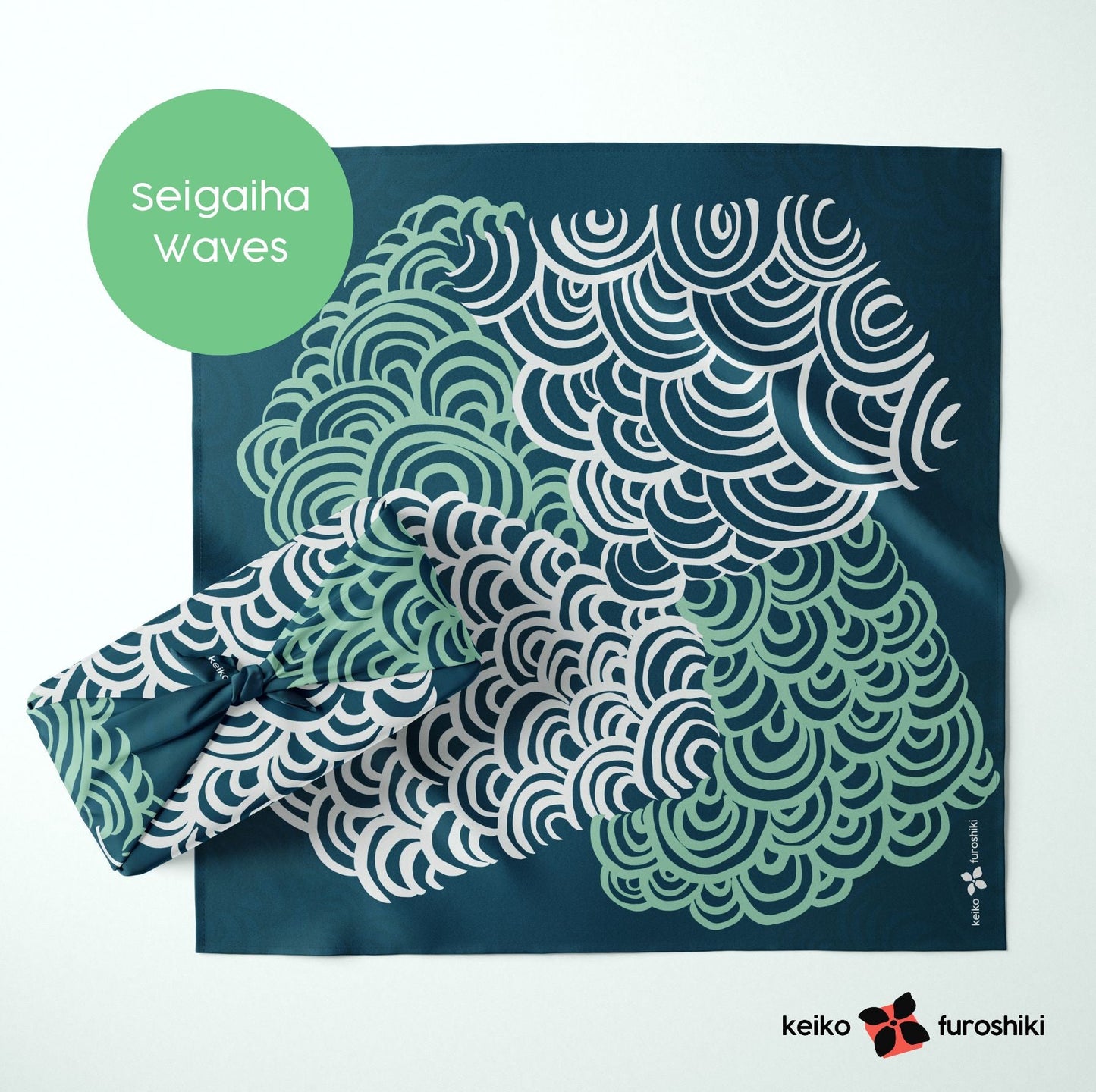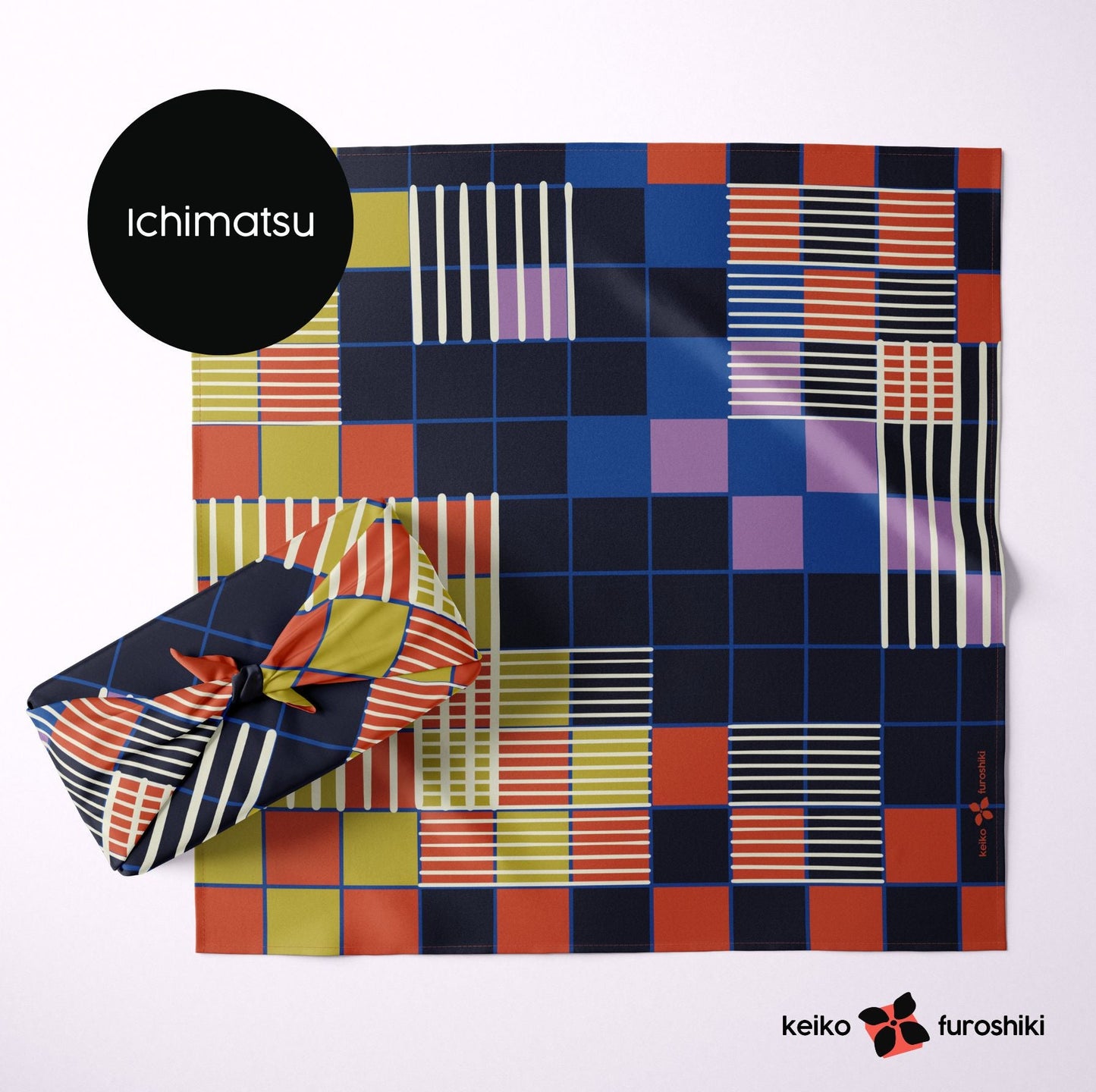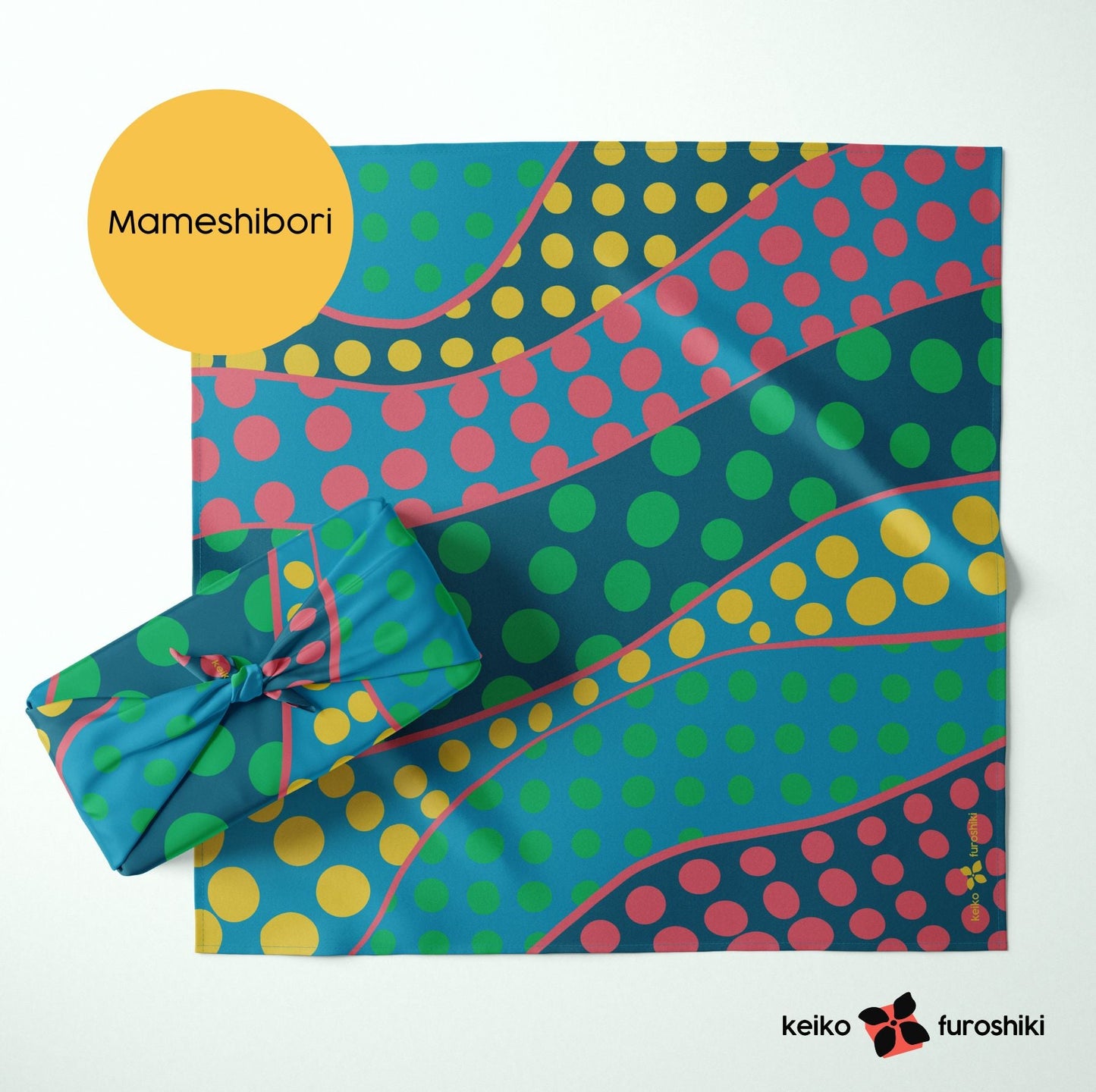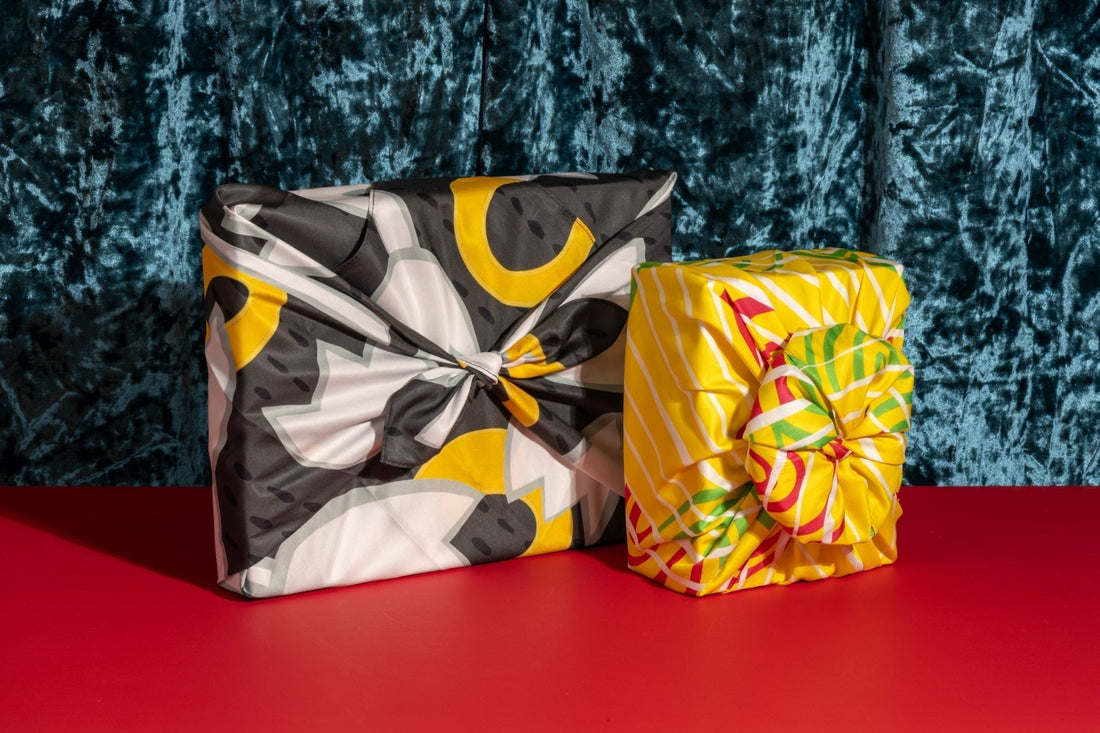
The Ultimate Guide to Ordering Custom Furoshiki: Fabric, Hemming, and Printing Explained
Furoshiki, the traditional Japanese cloth used for wrapping and carrying items, is gaining popularity for its versatility and eco-friendliness. Whether you're designing a custom furoshiki for a gift, promotional item, or personal use, understanding fabric options, hemming techniques, and printing methods is key to creating a beautiful and functional product.
In this guide, we’ll help you make an informed decision by explaining the best fabric choices for custom furoshiki, how to select the right hemming style, and what to consider when opting for double-sided printing.

Choosing the Right Fabric for Your Custom Furoshiki
When selecting fabric for your custom furoshiki, three main options stand out: organic cotton, organic silk, and recycled polyester twill. Each fabric has unique properties that affect both the look and feel of the final product. Depending on your brand aesthetic, corporate values, and the product that will be wrapped, all of these choices offer something to love. Don’t hesitate to ask us for suggestions!
Organic Cotton: Eco-Friendly Option
Organic cotton shares many of the same qualities as regular cotton but is grown without harmful chemicals. It’s ideal for customers who prioritize sustainability. Like cotton, it requires pre-treatment for printing and may have a slightly textured finish, giving it an artisanal quality. Machine hemming is recommended for its durability.
Available in 65 grams per square meter (gsm), 80 gsm, and 100 gsm, organic cotton is a versatile fabric for furoshiki wrapping. The lighter weight is less opaque but offers a lot of versatility to be worn as a light neck or hair scarf. The sturdier weight offers more durability and opacity..
Best For: Eco-conscious customers who want a natural, chemical-free fabric. Not all manufacturers have the same textile, environmental, and labor certifications. That’s why it’s important to partner with a reliable company that can vet factories and makers to verify industry-leading certifications and quality.

Organic Silk: The luxurious and sophisticated option
Organic silk is a luxurious and eco-friendly fabric that’s perfect for custom furoshiki, making it an excellent choice for high-end brands. Its natural sheen and smooth texture elevate any design, creating an impression of elegance and sophistication. Organic silk is available in 12 and 14 momme (the unit for silk weight measurement), allowing for versatility in both light, airy wraps and more structured options. A rolled hem is the preferred finishing method for silk, as it complements the delicate nature of the fabric while ensuring a polished edge. One of silk’s standout features is the ability to support double-sided printing, enabling designs on both sides of the fabric—a unique advantage not typically offered by other materials.
Best For: Eco-conscious customers seeking a luxurious, natural fabric. Organic silk offers unmatched elegance and more finishing options. But, it’s essential to work with trusted manufacturers who ensure top-tier environmental and labor certifications for truly sustainable quality.

Recycled Polyester Twill: Durable and Vibrant
Recycled polyester twill is made from post-consumer plastic, offering a sustainable option without sacrificing durability. It’s perfect for designs that need sharp, crisp lines and vibrant colors. Polyester twill doesn’t absorb ink as readily as cotton, so it requires a specific type of ink, like UV or disperse inks, for the best results. It’s also great for machine hemming due to its strength.
Best For: Customers who need a long-lasting, vibrant, and low-maintenance fabric. It’s also among the more affordable options and easiest to machine wash for fuss-free laundering.
Whether you choose organic cotton, organic silk, or recycled polyester twill, each has its printing qualities and finishing options. Not sure what is best? Get in touch with us to order your sample pack.
Hemming: Machine vs. Hand-Rolled Hemming
The hemming technique you choose affects the overall finish of your furoshiki. The two primary methods are machine hemming and hand-rolled hemming.
Machine Hemming
Machine hemming is quick, efficient, and works best for thicker fabrics like cotton and recycled polyester twill. It provides a clean, consistent edge, making it ideal for durable, everyday furoshiki.

Best For: Durable fabrics, larger orders, and cost-effective production.
Advantages: Fast, affordable, and provides a clean, uniform look.
Hand-Rolled Hemming
Hand-rolled hemming is a more delicate and luxurious finish, often reserved for silk. This method involves rolling and stitching the edges by hand, creating a soft, almost invisible edge that complements the fabric's natural drape and texture.

Best For: Luxurious fabrics like silk, especially for high-end or gift furoshiki.
Advantages: Provides a refined, artisanal touch, perfect for delicate fabrics.
Why Silk Requires Hand-Rolled Hemming: Silk is a delicate, slippery fabric that is difficult to machine hem without damaging its fine texture. Hand-rolled hemming ensures a soft, flexible finish that doesn’t detract from the fabric’s luxurious feel.
Double-Sided Printing: Vibrancy and Versatility
Double-sided printing is a premium option where designs are printed on both sides of the fabric, making the furoshiki reversible. This is especially popular for silk, which is lightweight and smooth, allowing the ink to distribute evenly on both sides. Silk’s natural sheen also enhances the vibrancy of double-sided prints.

Silk is typically the fabric of choice for double-sided printing because of its luxurious feel, color richness, and smooth texture, which allows for vibrant prints on both sides without feeling heavy or stiff.
Other Fabrics: While recycled polyester twill and organic cotton can also support double-sided printing, the results may not be as vivid or crisp as on silk. These fabrics are thicker and may not have the same fluidity, leading to a stiffer finish when printed on both sides.
Best For: Silk for a premium, vibrant reversible furoshiki. Polyester twill and organic cotton can also work, but the print may not be as vibrant or soft.
Final Considerations: What’s Right for Your Custom Furoshiki?
When ordering your custom furoshiki, consider the following:
Fabric Type: Organic cotton for a soft, breathable feel, organic silk for a luxurious style, or recycled polyester twill for durability and vibrant colors.
Hemming Method: If you want a clean, functional finish, machine hemming is ideal. For an elegant, high-end look, hand-rolled hemming is perfect—especially for silk.
Printing: Opt for silk if you want double-sided printing with vibrant, rich colors, but know that other fabrics like polyester twill or organic cotton can also handle double-sided printing with slightly different results.
Create Your Perfect Custom Furoshiki with Keiko Furoshiki
Now that you understand the key factors—fabric, hemming, and printing—you're ready to create a custom furoshiki that fits your style and purpose. Whether you choose eco-friendly organic cotton, luxurious organic silk, or a vibrant recycled polyester twill, there’s a perfect fabric for every design. Add the right finishing touches with machine or hand-rolled hemming, and choose double-sided printing for a truly luxurious furoshiki.
Get in touch with us to kickstart your custom furoshiki project. We can advise you on the best fabric, printing technique, and hemming for your particular brand and need. Don’t hesitate to request a quote and order our fabric sample packs to compare options.


